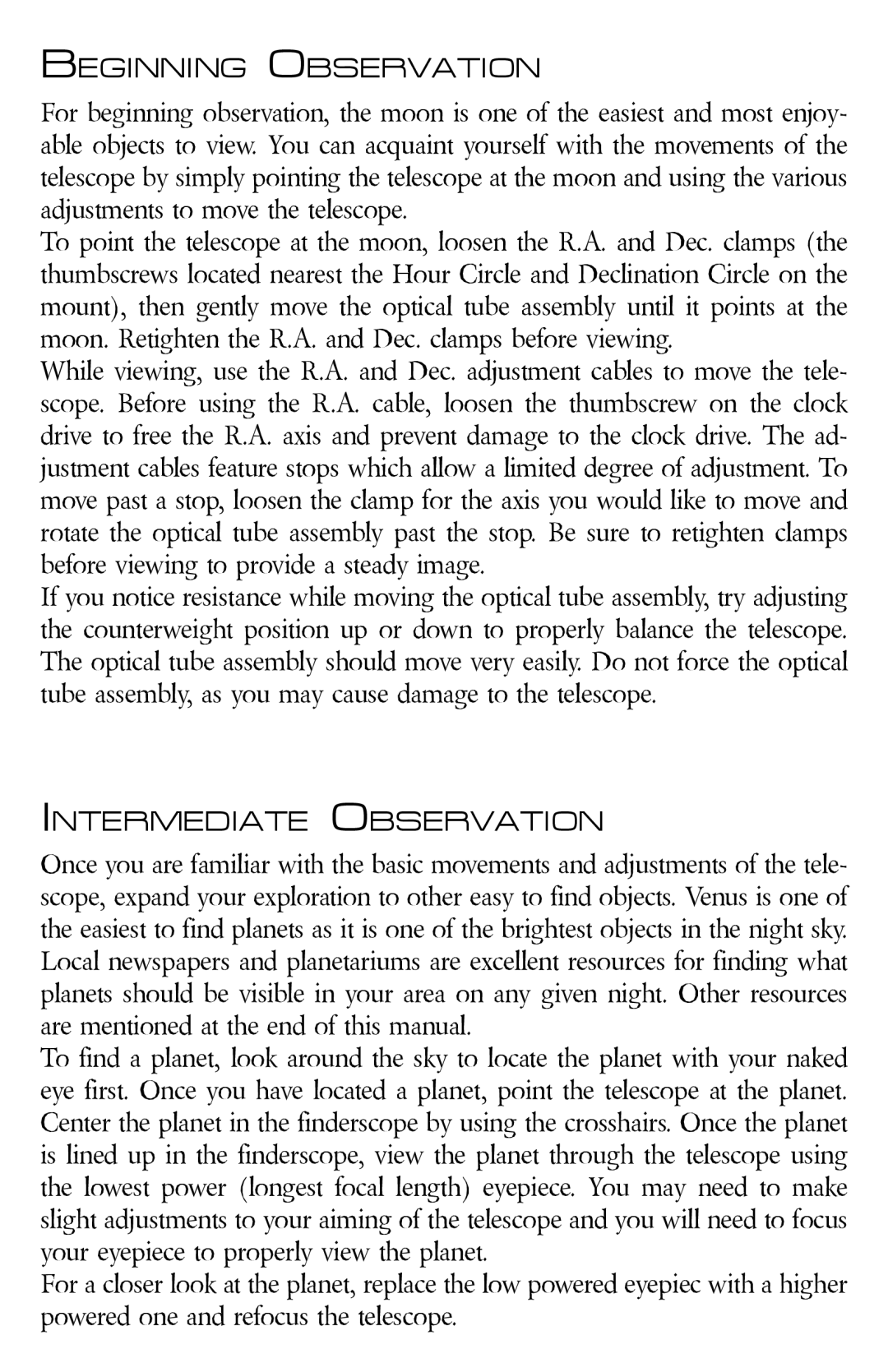BEGINNING OBSERVATION
For beginning observation, the moon is one of the easiest and most enjoy- able objects to view. You can acquaint yourself with the movements of the telescope by simply pointing the telescope at the moon and using the various adjustments to move the telescope.
To point the telescope at the moon, loosen the R.A. and Dec. clamps (the thumbscrews located nearest the Hour Circle and Declination Circle on the mount), then gently move the optical tube assembly until it points at the moon. Retighten the R.A. and Dec. clamps before viewing.
While viewing, use the R.A. and Dec. adjustment cables to move the tele- scope. Before using the R.A. cable, loosen the thumbscrew on the clock drive to free the R.A. axis and prevent damage to the clock drive. The ad- justment cables feature stops which allow a limited degree of adjustment. To move past a stop, loosen the clamp for the axis you would like to move and rotate the optical tube assembly past the stop. Be sure to retighten clamps before viewing to provide a steady image.
If you notice resistance while moving the optical tube assembly, try adjusting the counterweight position up or down to properly balance the telescope. The optical tube assembly should move very easily. Do not force the optical tube assembly, as you may cause damage to the telescope.
INTERMEDIATE OBSERVATION
Once you are familiar with the basic movements and adjustments of the tele- scope, expand your exploration to other easy to find objects. Venus is one of the easiest to find planets as it is one of the brightest objects in the night sky. Local newspapers and planetariums are excellent resources for finding what planets should be visible in your area on any given night. Other resources are mentioned at the end of this manual.
To find a planet, look around the sky to locate the planet with your naked eye first. Once you have located a planet, point the telescope at the planet. Center the planet in the finderscope by using the crosshairs. Once the planet is lined up in the finderscope, view the planet through the telescope using the lowest power (longest focal length) eyepiece. You may need to make slight adjustments to your aiming of the telescope and you will need to focus your eyepiece to properly view the planet.
For a closer look at the planet, replace the low powered eyepiec with a higher powered one and refocus the telescope.
